Performance and Combustion Characteristics Analysis of Multi-Cylinder CI Engine Using Essential Oil Blends
Abstract
:1. Introduction
2. Methodology
2.1. Fuel Property Analysis
2.2. Engine Experiment Details
3. Results and Discussion
4. Conclusions
- Most of the blends show higher mechanical efficiency.
- All of the blends indicate high BSFCs due to their low heating value.
- Thermal efficiencies with the blends were low. This was associated with the lower cetane number.
- All oil blends show low peak pressure due to low energy content.
- The blow-by emissions were lower with the blends.
Acknowledgments
Author Contributions
Conflicts of Interest
Acronyms
| BMEP | Brake mean effective pressure |
| BP | Brake power |
| BSEC | Brake specific energy consumption |
| BSFC | Brake specific fuel consumption |
| BTE | Brake thermal efficiency |
| CSO | Clove stem oil |
| EGT | Exhaust gas temperature |
| FMEP | Friction mean effective pressure |
| HRR | Heat release rate |
| IMEP | Indicated mean effective pressure |
| IP | Indicated power |
| ISFC | Indicated specific fuel consumption |
| ITE | Indicated thermal efficiency |
| LHV | Lower heating value |
| ME | Mechanical efficiency |
| mf | Fuel flow rate |
| RPM | Revolution per minute |
| SOC | Start of combustion |
| WCB | Waste cooking biodiesel |
Appendix A
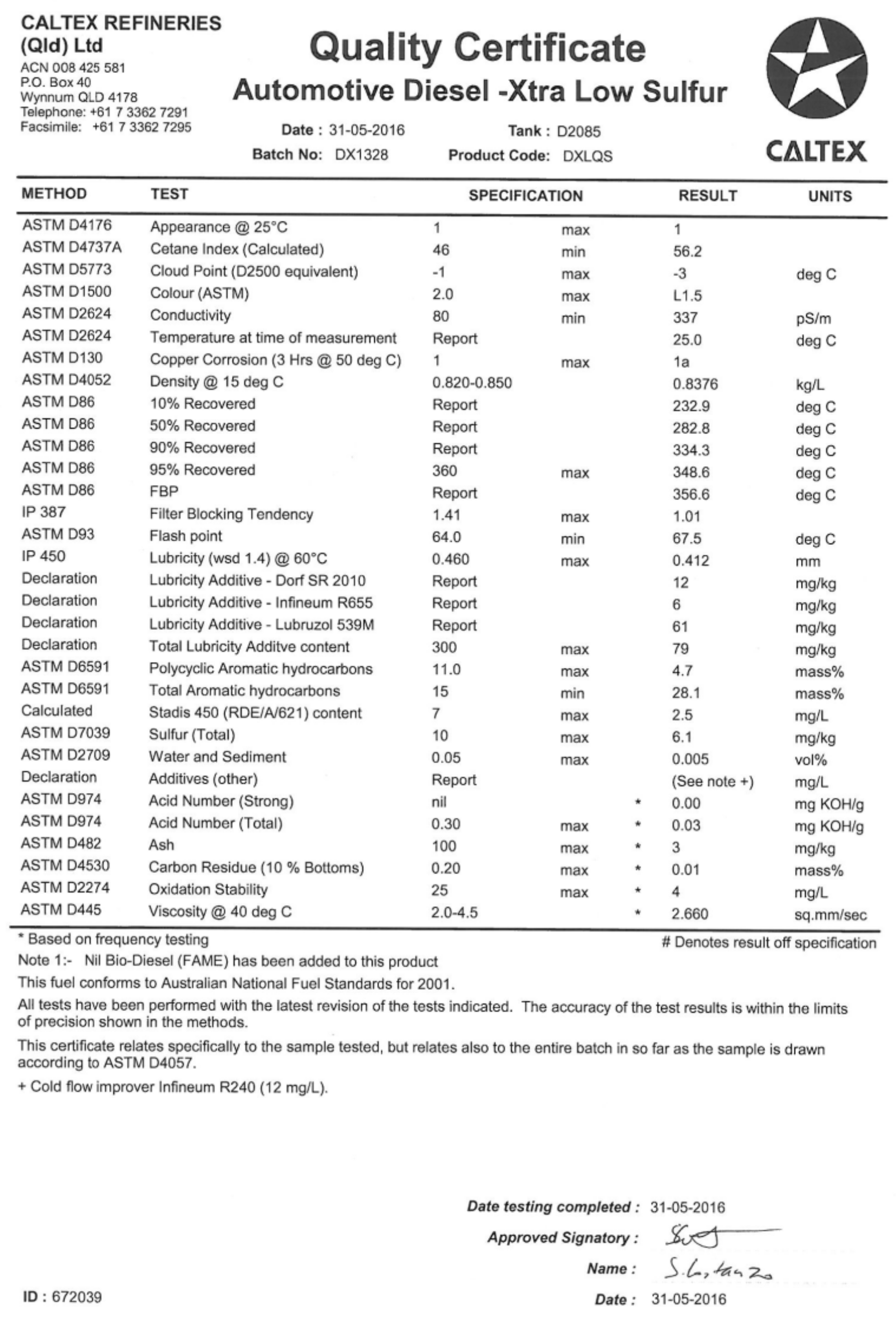
Appendix B
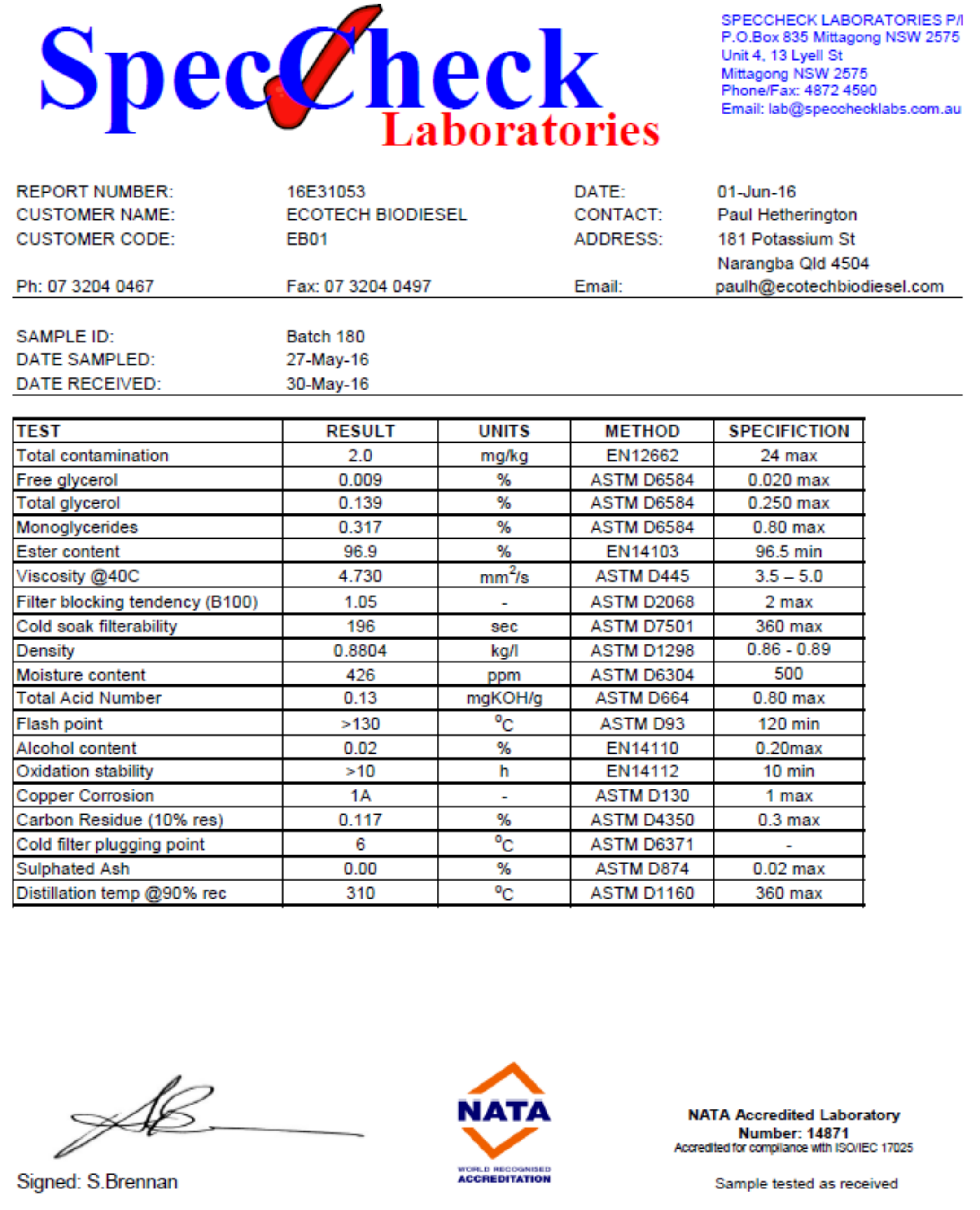
References
- El-Mougy, N.S. Effect of some essential oils for limiting early blight (Alternaria solani) development in potato field. J. Plant Prot. Res. 2009, 49, 57–62. [Google Scholar] [CrossRef]
- Vallinayagam, R.; Vedharaj, S.; Yang, W.M.; Saravanan, C.G.; Lee, P.S.; Chua, K.J.E.; Chou, S.K. Emission reduction from a diesel engine fueled by pine oil biofuel using SCR and catalytic converter. Atmos. Environ. 2013, 80, 190–197. [Google Scholar] [CrossRef]
- Mbarawa, M. The effect of clove oil and diesel fuel blends on the engine performance and exhaust emissions of a compression-ignition engine. Biomass Bioenergy 2010, 34, 1555–1561. [Google Scholar] [CrossRef]
- Mbarawa, M. Performance, emission and economic assessment of clove stem oil–diesel blended fuels as alternative fuels for diesel engines. Renew. Energy 2008, 33, 871–882. [Google Scholar] [CrossRef]
- Rakopoulos, D. Combustion and emissions of cottonseed oil and its bio-diesel in blends with either n-butanol or diethyl ether in HSDI diesel engine. Fuel 2013, 105, 603–613. [Google Scholar] [CrossRef]
- Sathiyamoorthi, R.; Sankaranarayanan, G. Effect of antioxidant additives on the performance and emission characteristics of a DICI engine using neat lemongrass oil–diesel blend. Fuel 2016, 174, 89–96. [Google Scholar] [CrossRef]
- Alagumalai, A. Combustion characteristics of lemongrass (Cymbopogon flexuosus) oil in a partial premixed charge compression ignition engine. Alex. Eng. J. 2015, 54, 405–413. [Google Scholar] [CrossRef]
- Sathiyamoorthi, R.; Sankaranarayanan, G. Experimental investigation of performance, combustion and emission characteristics of neat lemongrass oil in DI diesel engine. Int. J. Curr. Eng. Technol. 2014, 3, 25–30. [Google Scholar]
- Esoteric Essential Oils. Orange Essential Oil (Sweet) Information. Available online: http://essentialoils.co.za/essential-oils/orange (accessed on 20 September 2017).
- Purushothaman, K.; Nagarajan, G. Performance, emission and combustion characteristics of a compression ignition engine operating on neat orange oil. Renew. Energy 2009, 34, 242–245. [Google Scholar] [CrossRef]
- Poola, R.B.; Nagalingam, B.; Gopalakrishnan, K. Performance studies with biomass-derived high-octane fuel additives in a two-stroke spark-ignition engine. Biomass Bioenergy 1994, 6, 369–379. [Google Scholar] [CrossRef]
- Huang, Z.; Lu, H.; Jiang, D.; Zeng, K.; Liu, B.; Zhang, J.; Wang, X. Combustion behaviors of a compression-ignition engine fuelled with diesel/methanol blends under various fuel delivery advance angles. Bioresour. Technol. 2004, 95, 331–341. [Google Scholar] [CrossRef] [PubMed]
- Kumar, M.S.; Ramesh, A.; Nagalingam, B. Complete Vegetable Oil Fueled Dual Fuel Compression Ignition Engine; SAE Technical Paper 2001-28-0067; SAE: Zürich, Switzerland, 2001. [Google Scholar]
- Wikipedia Contributors. Eucalyptus Wikipedia, The Free Encyclopedia. Available online: https://en.wikipedia.org/w/index.php?title=Eucalyptus&oldid=800723231 (accessed on 20 September 2017).
- Devan, P.K.; Mahalakshmi, N.V. An Experimental Investigation on Performance and Emission Characteristics of Eucalyptus Oil-Diesel Blends in a D.I. Diesel Engine; SAE Technical Paper 2008-01-0757; SAE: Zürich, Switzerland, 2008. [Google Scholar]
- Senthil, R.; Silambarasan, R.; Pranesh, G. Exhaust emissions reduction from diesel engine using combined Annona–Eucalyptus oil blends and antioxidant additive. Heat Mass Transf. 2017, 53, 1105–1112. [Google Scholar] [CrossRef]
- Tamilvendhan, D.; Ilangovan, V. A performance, emission and combustion investigation on hot air assisted eucalyptus oil direct injected compression ignition engine. Mod. Appl. Sci. 2011, 5, 53–62. [Google Scholar] [CrossRef]
- Wikipedia Contributors, “Tea Tree Oil,” Wikipedia, The Free Encyclopedia. Available online: https://en.wikipedia.org/w/index.php?title=Tea_tree_oil&oldid=799591597 (accessed on 20 September 2017).
- Rahman, S.M.A.; Van, T.C.; Hossain, F.M.; Dowell, A.; Islam, M.A.; Nabi, M.N.; Marchese, A.J.; Tryner, J.; Rainey, T.J.; Ristovski, Z.D.; et al. Experimental investigation of fuel properties and emission characteristics of essential oil blends in a multi-cylinder CI engine. 2017. submitted. [Google Scholar]
- Bodisco, T.; Brown, R.J. Inter-cycle variability of in-cylinder pressure parameters in an ethanol fumigated common rail diesel engine. Energy 2013, 52, 55–65. [Google Scholar] [CrossRef] [Green Version]
- Hossain, F.M.; Nabi, M.N.; Rainey, T.J.; Bodisco, T.; Rahman, M.M.; Suara, K.; Rahman, S.M.A.; Van, T.C.; Ristovski, Z.D.; Brown, R.J. Investigation of microalgae HTL fuel effects on diesel engine performance and exhaust emissions using surrogate fuels. Energy Convers. Manag. 2017, 152, 186–200. [Google Scholar] [CrossRef]
- Gargate, S.; Aher, R.; Jacob, R.; Dambhare, S. Estimation of Blow-by in Diesel Engine: Case Study of a Heavy Duty Diesel Engine. Int. J. Emerg. Eng. Res. Technol. 2014, 2, 165–170. [Google Scholar]
- Quillian, R.; Meckel, N.; Moffitt, J. Cleaner Crankcases with Blowby Diversion; SAE Technical Paper 640804; SAE: Zürich, Switzerland, 1964. [Google Scholar]
- George, S.; Balla, S.; Gautam, M. Effect of diesel soot contaminated oil on engine wear. Wear 2007, 262, 1113–1122. [Google Scholar] [CrossRef]
- Heywood, J.B. Internal Combustion Engine Fundamentals; Mcgraw-Hill: New York, NY, USA, 1988. [Google Scholar]
- Pullen, J.; Saeed, K. Factors affecting biodiesel engine performance and exhaust emissions—Part I: Review. Energy 2014, 72, 1–16. [Google Scholar] [CrossRef]
- Deep, A.; Kumar, N.; Kumar, M.; Singh, A.; Gupta, D.; Patel, J.S. Performance and Emission Studies of Diesel Engine Fuelled with Orange Peel Oil and N-Butanol Alcohol Blends; SAE Technical Paper, 2015-26-0049; SAE: Zürich, Switzerland, 2015. [Google Scholar]
- Rakopoulos, D.C.; Rakopoulo, C.D.; Giakoumis, E.G.; Dimaratos, A.M.; Kyritsis, D.C. Effects of butanol–diesel fuel blends on the performance and emissions of a high-speed DI diesel engine. Energy Convers. Manag. 2010, 51, 1989–1997. [Google Scholar] [CrossRef]
- Chhabra, M.; Sharma, A.; Dwivedi, G. Performance evaluation of diesel engine using rice bran biodiesel. Egypt. J. Pet. 2017, 26, 511–518. [Google Scholar] [CrossRef]
- Karikalan, L.; Chandrasekaran, M. Performance and pollutants analysis on diesel engine using blends of Jatropha Biodiesel and Mineral Turpentine as fuel. Int. J. Environ. Sci. Technol. 2017, 14, 323–330. [Google Scholar] [CrossRef]
- Kumar, P.S.; Gopal, P.; Aravind, S. Performance analysis of diesel engine with diesel, ethanol & vegetable oil blends. Int. J. Chem. Sci. 2015, 13, 576–584. [Google Scholar]
- Churchill, G.V.; Srinivasan, C.A. Experimental Investigations on Combustion and Emission Characteristics of Biodiesel Blends in CI Engine. Int. Res. J. Eng. Technol. 2017, 4, 1523–1529. [Google Scholar]
- Kannan, G.R.; Anand, R. Experimental investigation on diesel engine with diestrol–water micro emulsions. Energy 2011, 36, 1680–1687. [Google Scholar] [CrossRef]
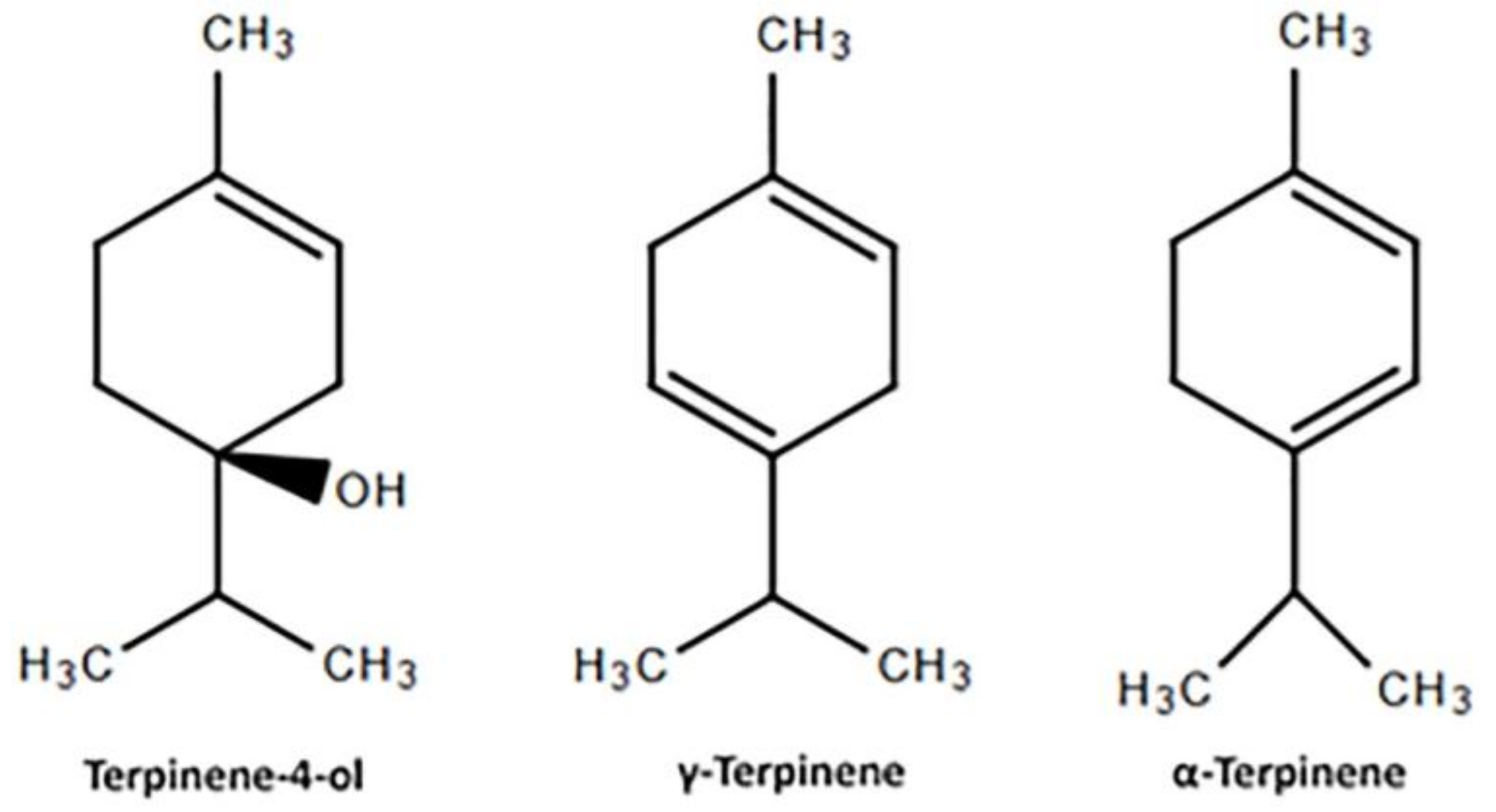
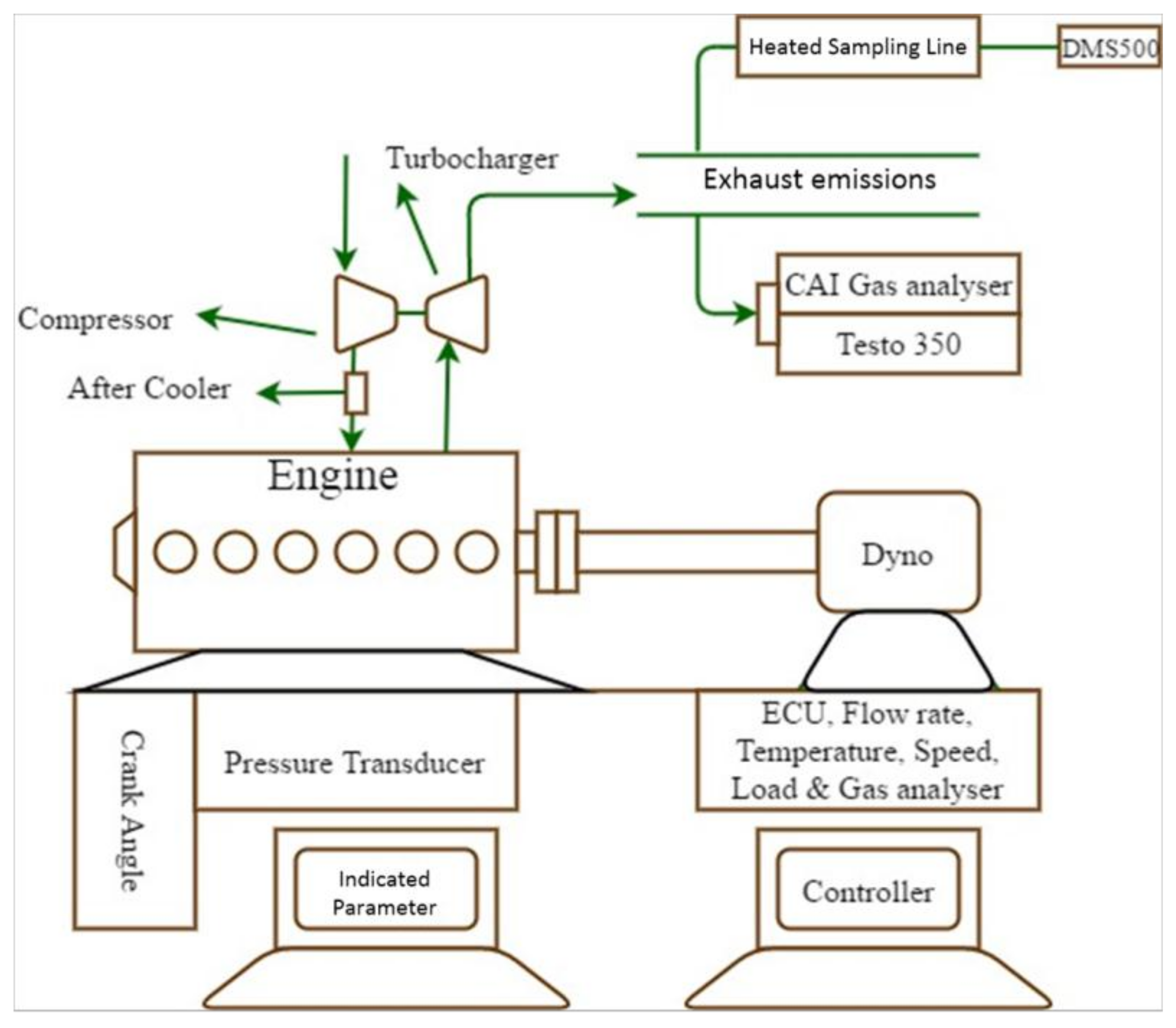
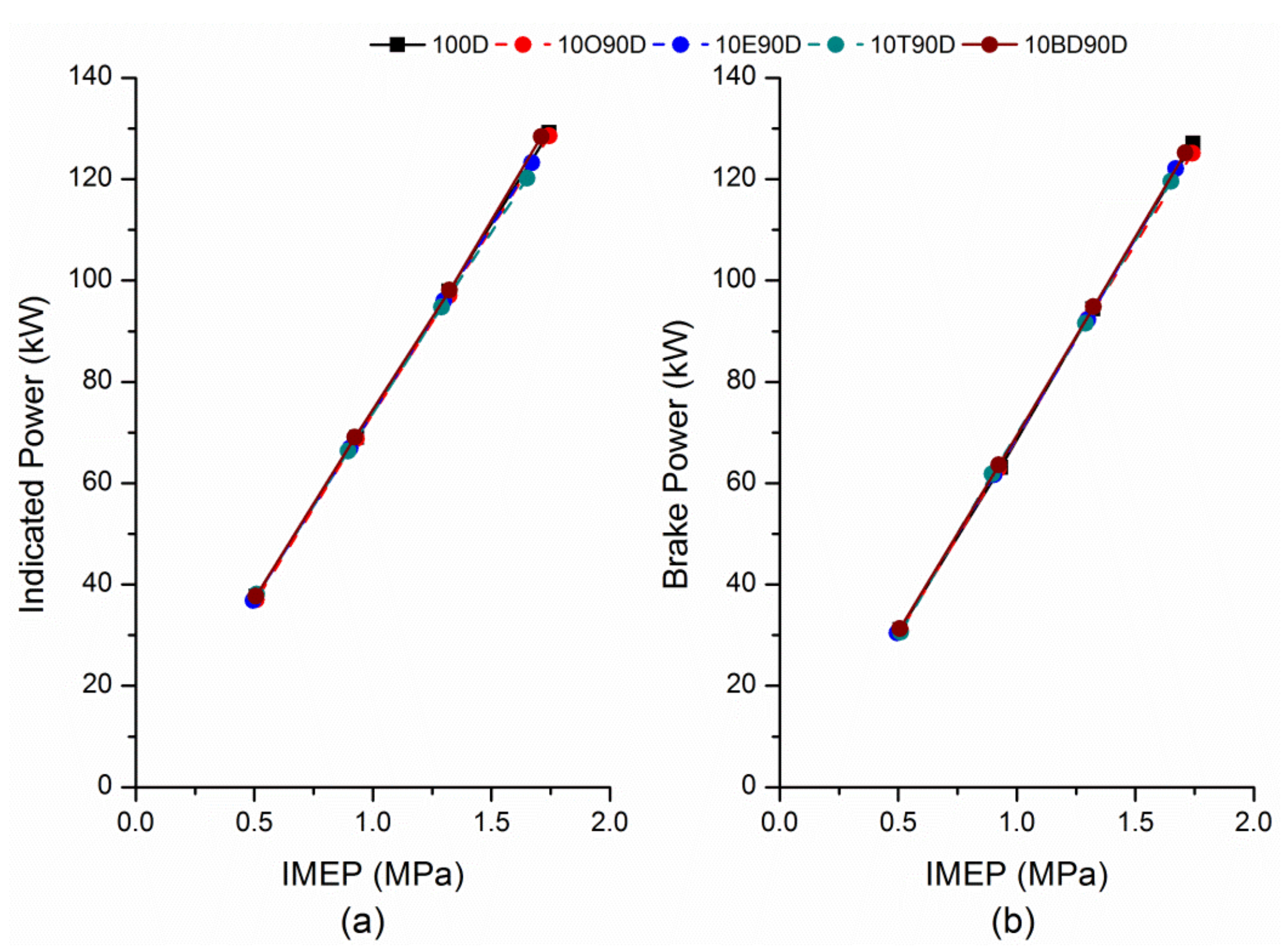
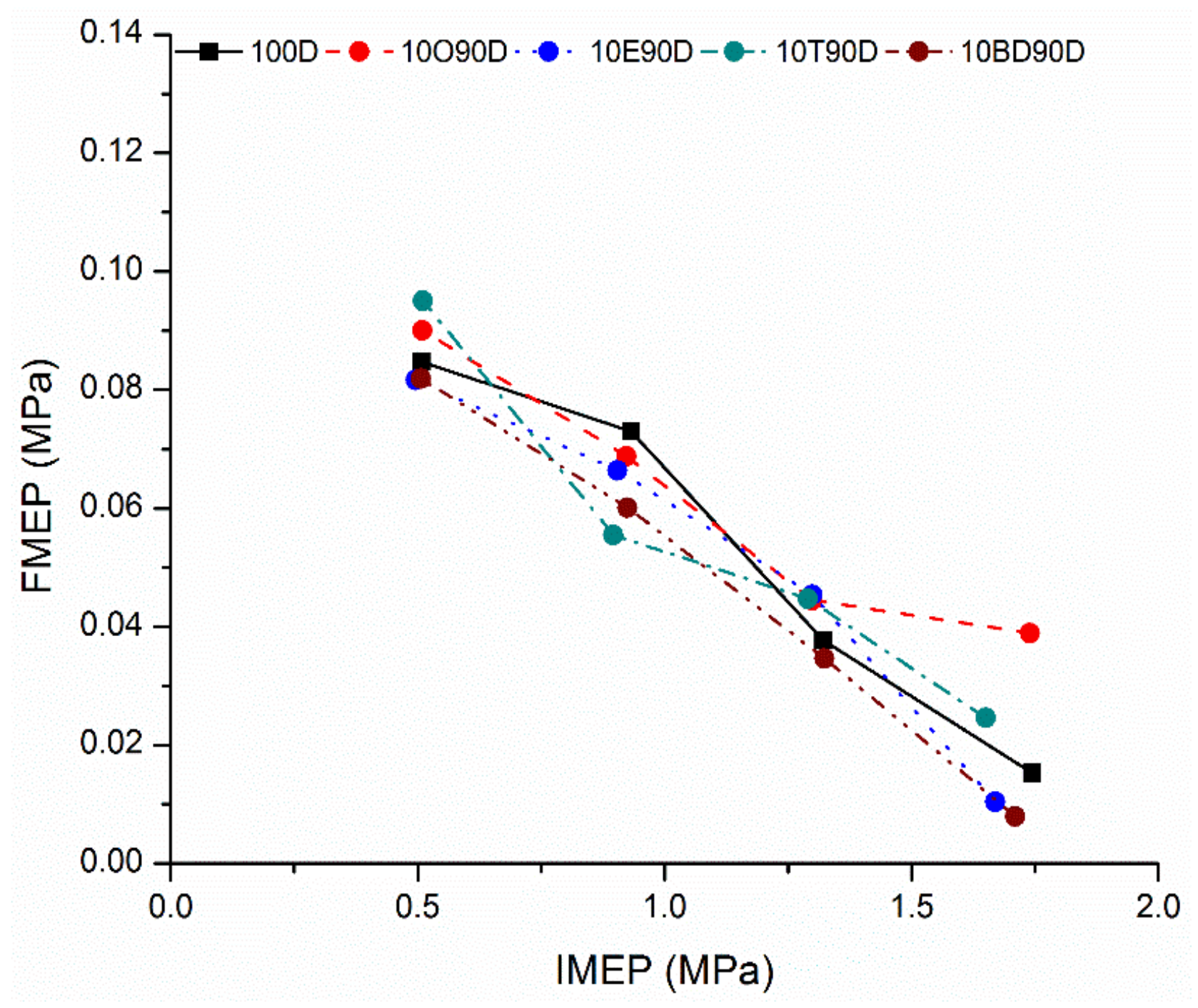
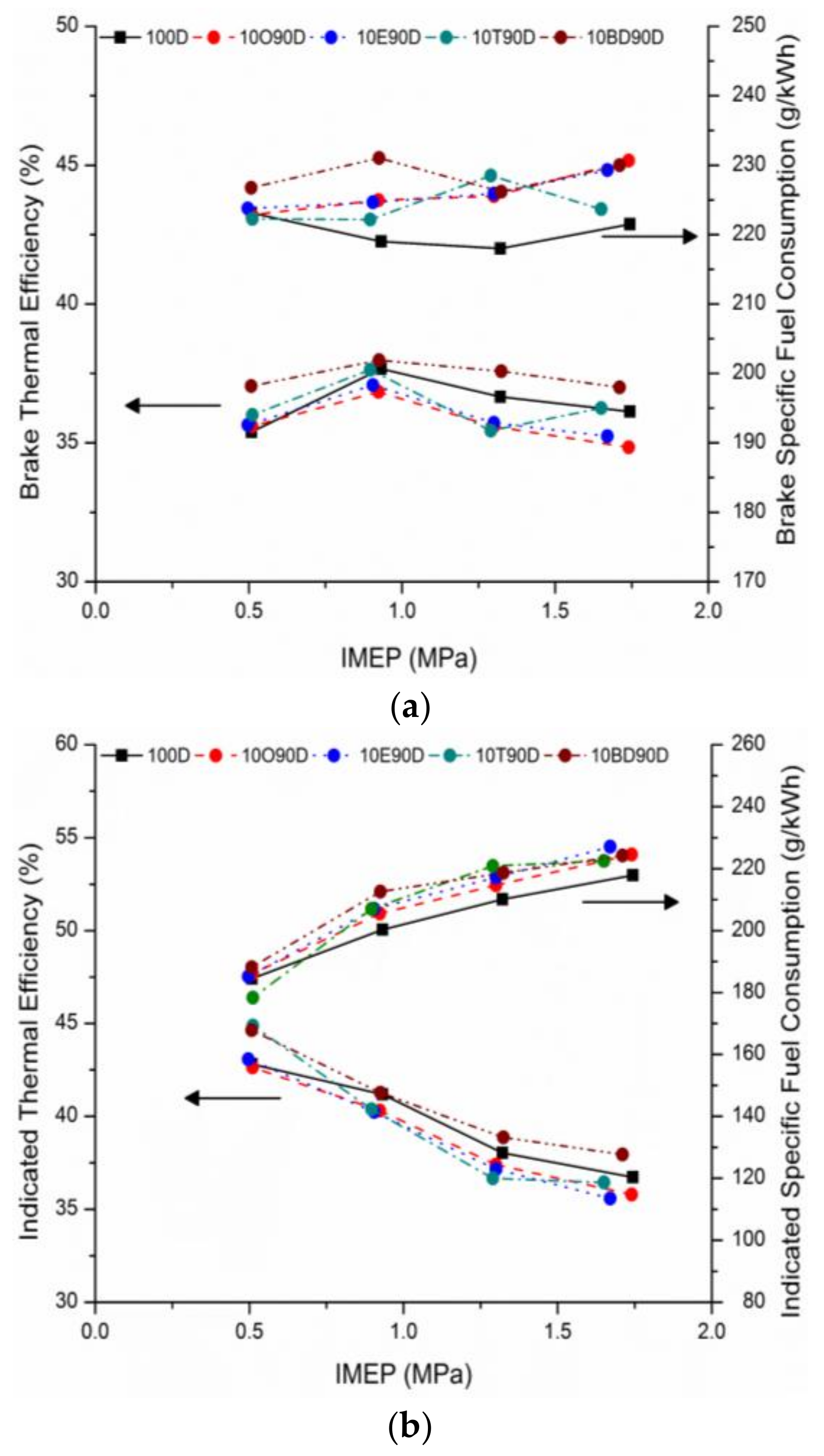
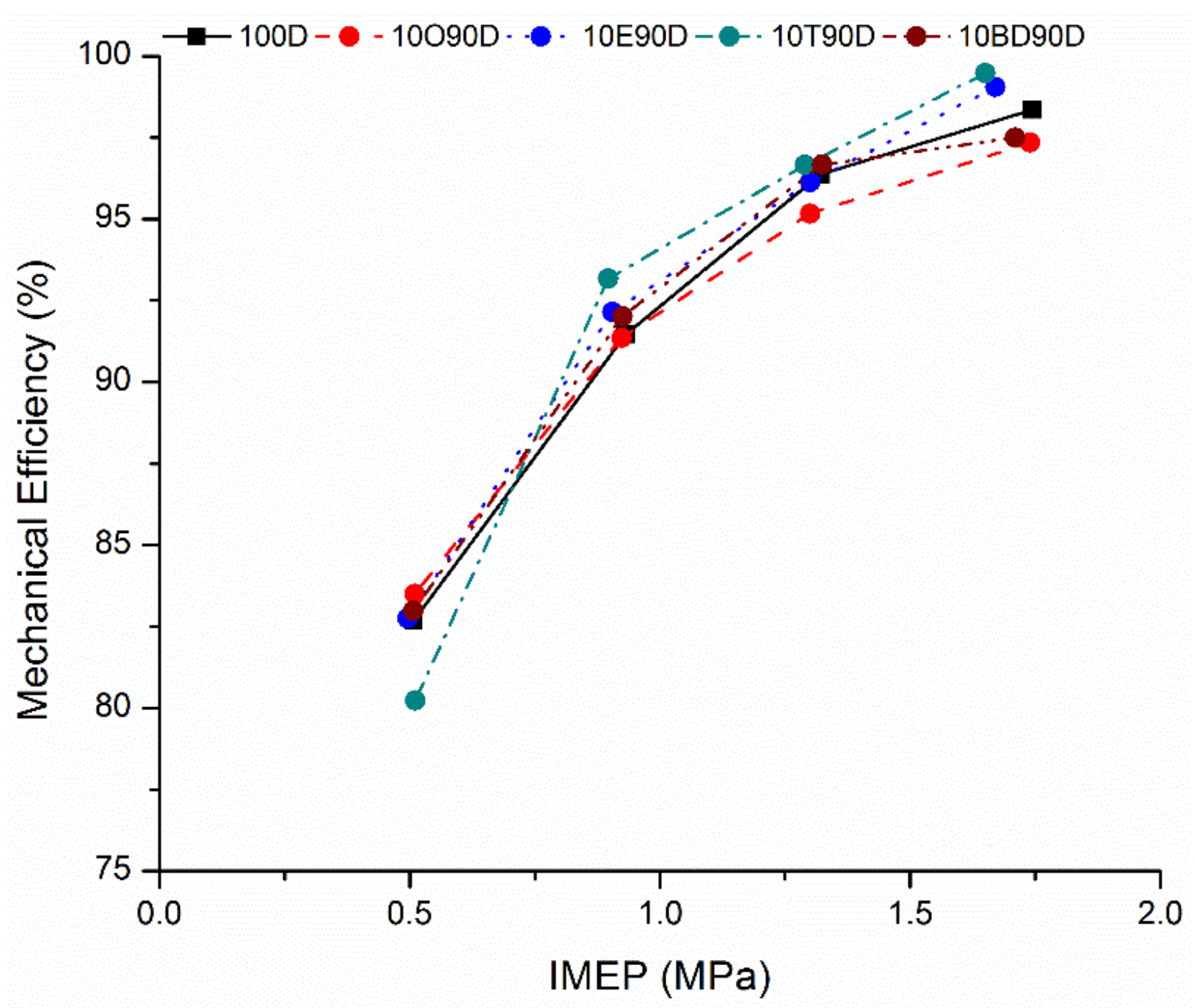
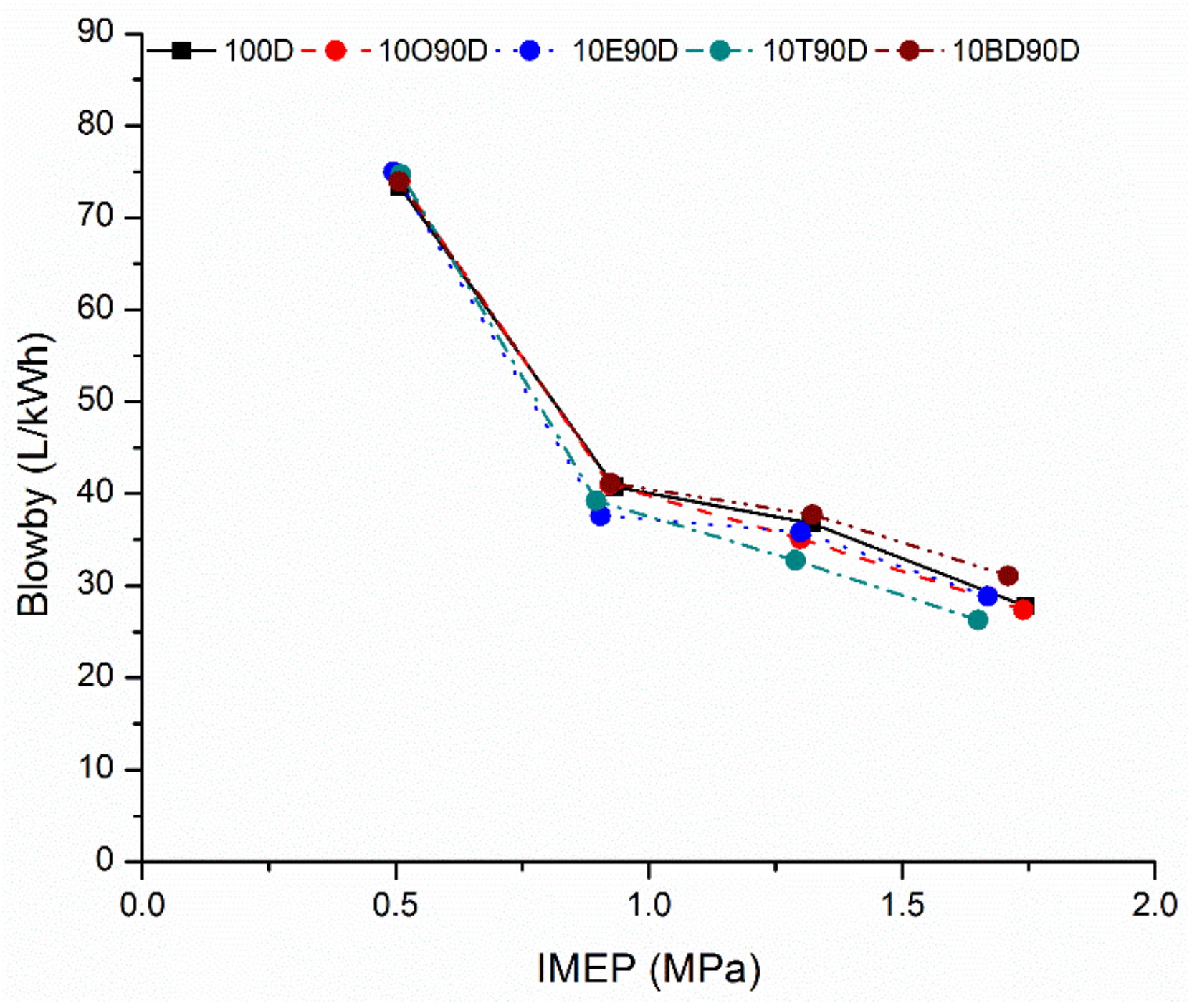
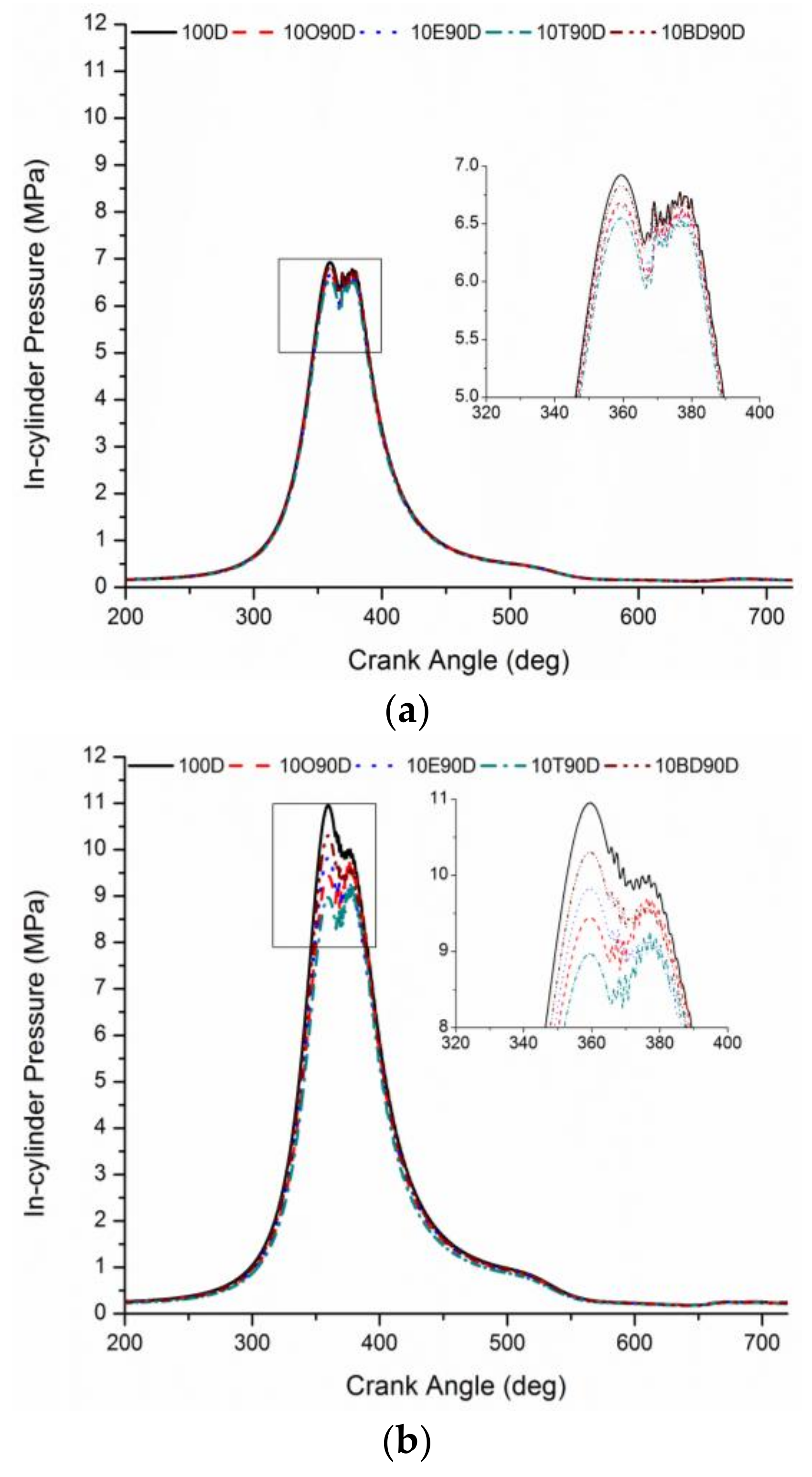
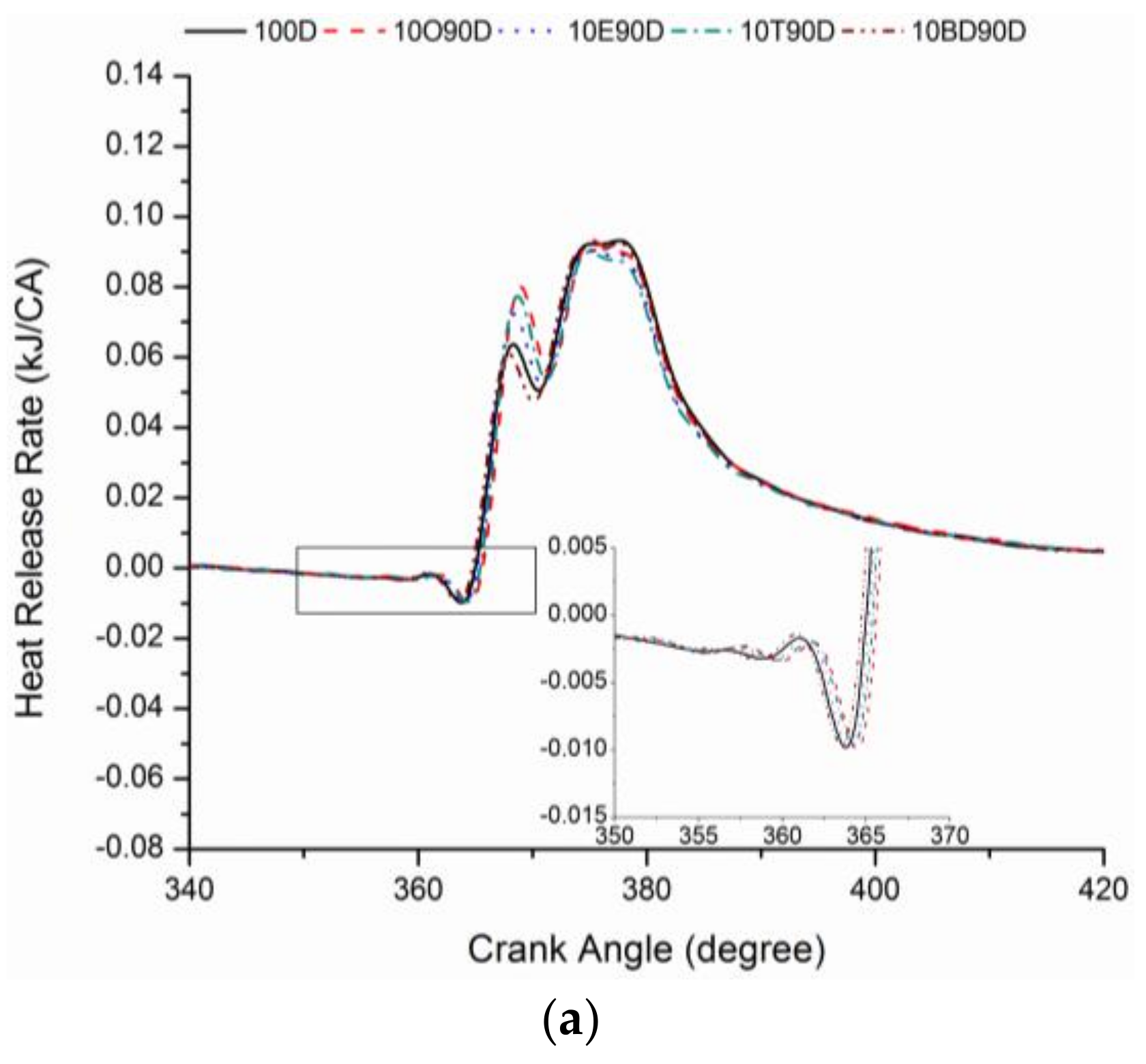
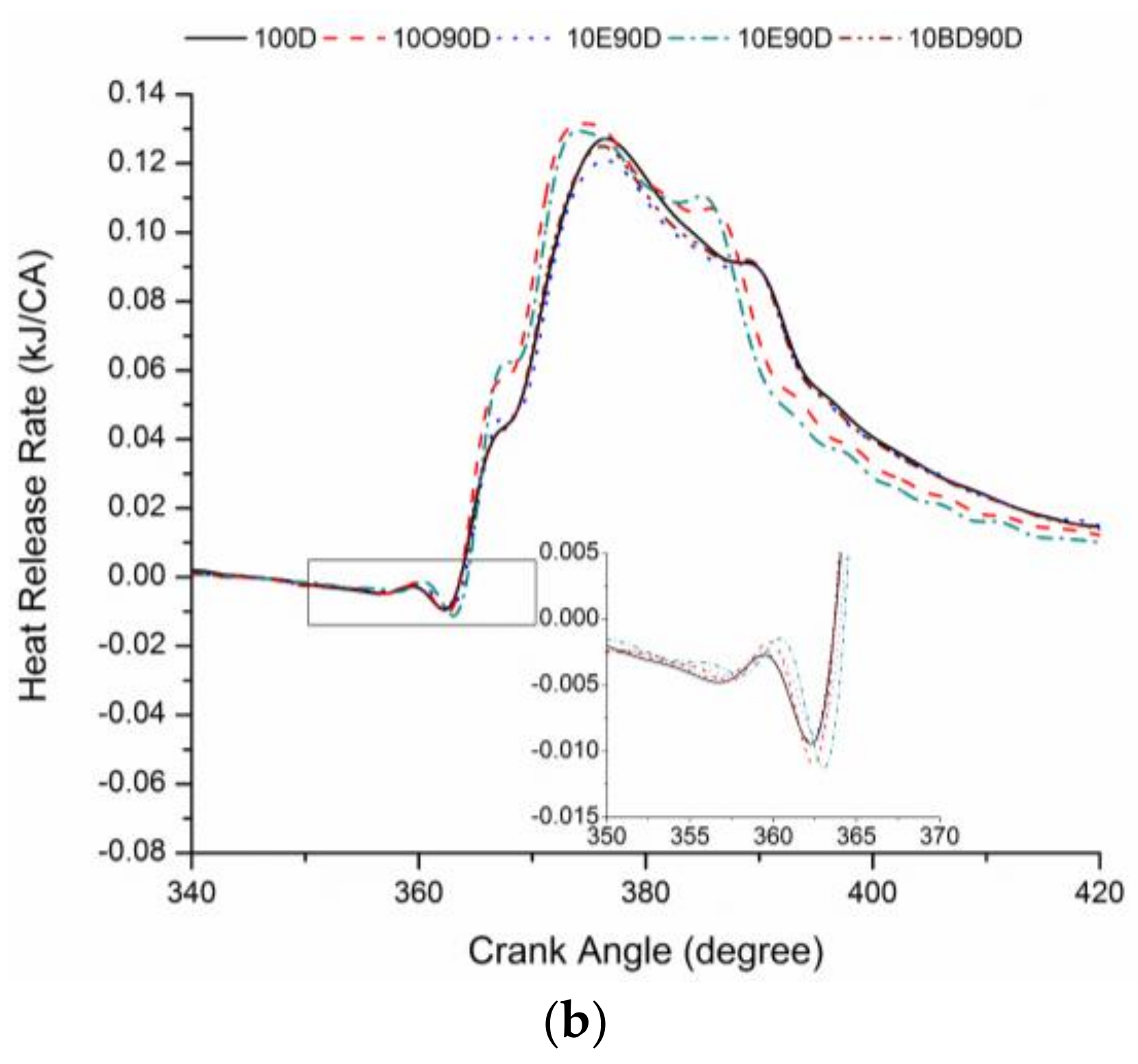
| Property | Density@25 °C kg/m3 | Viscosity@40 °C m2/s × 10−6 | Higher Heating Value kJ/g | Lower Heating Value a kJ/g | Surface Tension@25 °C mN/m |
|---|---|---|---|---|---|
| 100D | 837 | 3.12 | 45.92 | 43.95 | 26.09 |
| 10O90D | 836 | 2.82 | 46.62 | 43.87 | 26.23 |
| 10E90D | 839 | 2.9 | 45.10 | 42.35 | 27.30 |
| 10T90D | 841 | 2.98 | 44.98 | 42.26 | 26.32 |
| 10BD90D | 845 | 3.64 | 42.86 | 40.38 | 26.45 |
| Blends | Density@15 °C kg/m3 | Viscosity@40 °C m2/s × 10−6 | Flash Point °C | Oxidation Stability Induction Period a h | Heating Value KJ/g | Sound Speed m/s | Derived Cetane Number b |
|---|---|---|---|---|---|---|---|
| 100D | 853.11 | 2.75 | 60.7 | 14.22 | 45.585 | 1398 | 43.2 |
| 100O | 849.12 | 0.89 | 55.0 | 0.30 | 45.115 | 1360 | 19.5 |
| 10O90D | 852.64 | 2.37 | 57.5 | 7.88 | 45.375 | 1394 | 41.0 |
| 100E | 913.99 | 1.66 | 55.0 | 0.63 | 40.648 | 1326 | 10.0 |
| 10E90D | 858.66 | 2.60 | 57.5 | 18.53 | 45.144 | 1390 | 41.2 |
| 100T | 900.31 | 1.84 | 53.5 | 0.22 | 41.899 | 1394 | 10.4 |
| 10T90D | 857.01 | 2.53 | 56.5 | 0.04 | 44.982 | 1396 | 39.1 |
| Model | Cummins ISBe220 31 |
|---|---|
| Capacity | 5.9 Litres |
| Maximum power | 162 kW at 2000 RPM |
| Maximum torque | 820 N.m at 1500 RPM |
| Number of cylinders | 6 |
| Number of valves per cylinder | 4 |
| Compression ratio | 17.3:1 |
| Bore × Stroke | 102 × 120 (mm) |
| Dynamometer | Electronically-controlled water brake dynamometer |
| Injection system | Common-rail |
| Emission certification | Euro IIIA |
| Aspiration | Turbocharged |
© 2018 by the authors. Licensee MDPI, Basel, Switzerland. This article is an open access article distributed under the terms and conditions of the Creative Commons Attribution (CC BY) license (http://creativecommons.org/licenses/by/4.0/).
Share and Cite
Rahman, S.M.A.; Nabi, M.N.; Van, T.C.; Suara, K.; Jafari, M.; Dowell, A.; Islam, M.A.; Marchese, A.J.; Tryner, J.; Hossain, M.F.; et al. Performance and Combustion Characteristics Analysis of Multi-Cylinder CI Engine Using Essential Oil Blends. Energies 2018, 11, 738. https://doi.org/10.3390/en11040738
Rahman SMA, Nabi MN, Van TC, Suara K, Jafari M, Dowell A, Islam MA, Marchese AJ, Tryner J, Hossain MF, et al. Performance and Combustion Characteristics Analysis of Multi-Cylinder CI Engine Using Essential Oil Blends. Energies. 2018; 11(4):738. https://doi.org/10.3390/en11040738
Chicago/Turabian StyleRahman, S. M. Ashrafur, Md. Nurun Nabi, Thuy Chu Van, Kabir Suara, Mohammad Jafari, Ashley Dowell, Md. Aminul Islam, Anthony J. Marchese, Jessica Tryner, Md. Farhad Hossain, and et al. 2018. "Performance and Combustion Characteristics Analysis of Multi-Cylinder CI Engine Using Essential Oil Blends" Energies 11, no. 4: 738. https://doi.org/10.3390/en11040738
APA StyleRahman, S. M. A., Nabi, M. N., Van, T. C., Suara, K., Jafari, M., Dowell, A., Islam, M. A., Marchese, A. J., Tryner, J., Hossain, M. F., Rainey, T. J., Ristovski, Z. D., & Brown, R. J. (2018). Performance and Combustion Characteristics Analysis of Multi-Cylinder CI Engine Using Essential Oil Blends. Energies, 11(4), 738. https://doi.org/10.3390/en11040738





